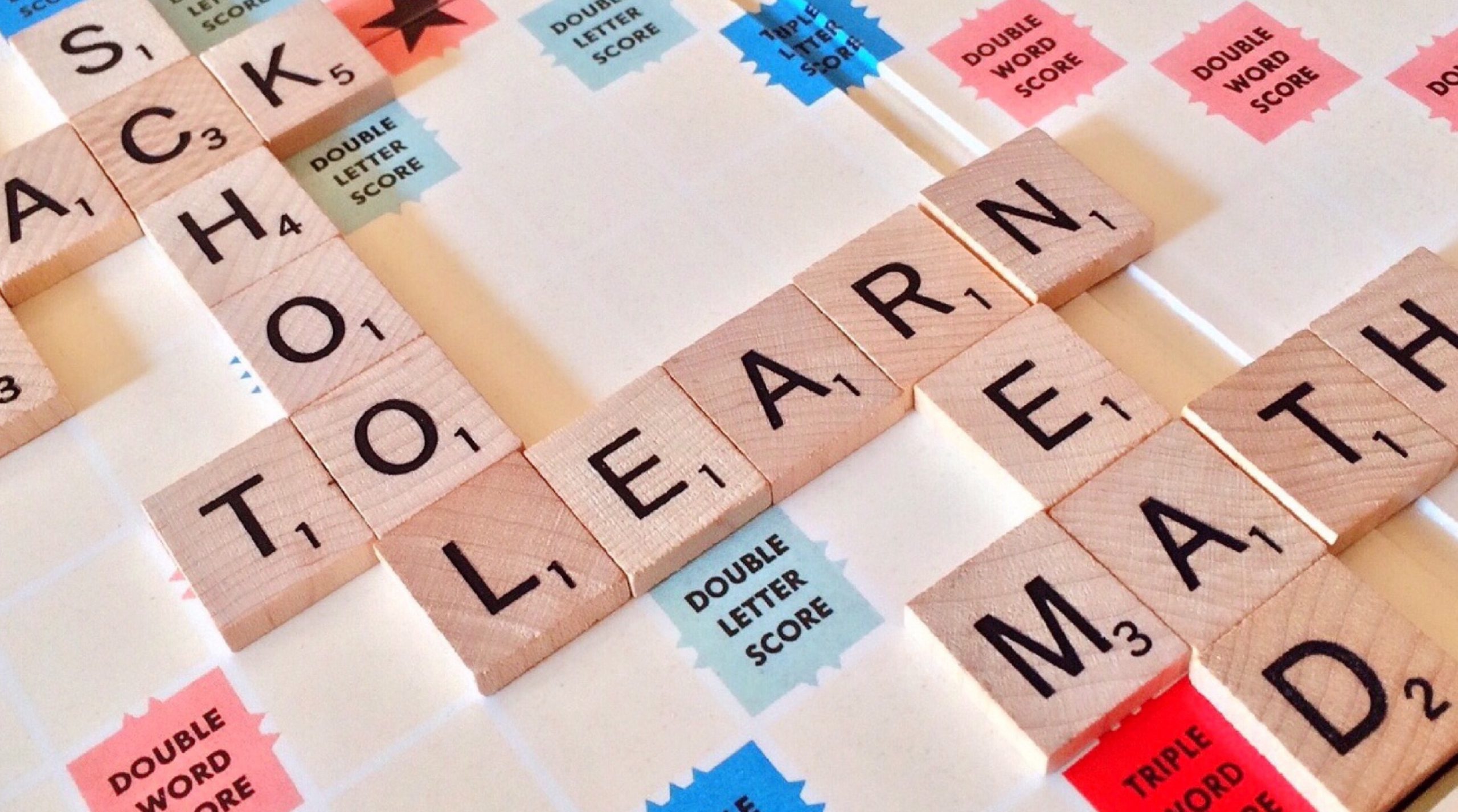Articles: “A,” “an,” and “the” are articles in English grammar.
“A” and “an” are indefinite articles used to refer to a non-specific noun or thing. “A” is used before a word that starts with a consonant sound, and “an” is used before a word that starts with a vowel sound. For example, “a cat” or “an apple.”
“The” is a definite article used to refer to a specific noun or thing. It is used before a singular or plural noun that is already known to the speaker and the listener. For example, “the cat” or “the apples.”
Here are some more examples:
- I saw a bird in the tree.
- Can I have an ice cream, please?
- The bird in the tree was singing loudly.
- I want to buy the ice cream from that vendor.
Note that “a” and “an” can also be used to indicate one item or thing, as in “I want to buy a book,” while “the” is used to refer to a specific item or thing, as in “I want to buy the book that we saw at the store yesterday.”
a/an before an adjective + singular noun combination
When using “a” or “an” before an adjective and a singular noun combination, the choice of article depends on the sound of the first letter of the noun. If the noun begins with a vowel sound, “an” is used, while if it begins with a consonant sound, “a” is used.
Here are some examples:
- An old book – “An” is used here because the word “old” begins with a vowel sound, even though the noun “book” begins with a consonant.
- A new car – “A” is used here because the word “new” begins with a consonant sound, even though the noun “car” begins with a vowel.
- A big house – “A” is used here because the word “big” begins with a consonant sound, and so does the noun “house”.
- An interesting article – “An” is used here because the word “interesting” begins with a vowel sound, even though the noun “article” begins with a consonant.
- A unique perspective – “A” is used here because the word “unique” begins with a consonant sound, even though the noun “perspective” begins with a vowel.
- A good idea – “A” is used here because the word “idea” begins with a vowel sound, even though the adjective “good” begins with a consonant.
- A part-time job – “A” is used here because the word “job” begins with a consonant sound, even though the adjective “part-time” begins with a vowel.
- A very important issue – “A” is used here because the word “issue” begins with a vowel sound, even though the adjective “very important” begins with consonants.
In all of these examples, the choice of an article is determined by the sound of the first letter of the noun. By paying attention to the sound of the first letter of the noun, you can choose the correct article to use before an adjective and singular noun combination to ensure that your writing is grammatically correct and easy to understand.
noun phrases with “a” or “an”
When using “a” or “an” with noun phrases, the choice of article depends on whether the noun phrase is countable or uncountable.
If the noun phrase is countable (refers to something that can be counted), “a” or “an” is used to indicate one instance of that noun. For example:
- A red apple – “A” is used here because “apple” is a countable noun and “red” describes the specific apple.
- An old chair – “An” is used here because “chair” is a countable noun and “old” describes the specific chair.
- If the noun phrase is uncountable (refers to something that cannot be counted), “a” or “an” is not used. For example:
- Milk – “A” or “an” is not used here because “milk” is an uncountable noun.
- Water pollution – “A” or “an” is not used here because “water pollution” is an uncountable noun.
In summary, consider whether the noun phrase is countable or uncountable when using “a” or “an” with noun phrases, and use the appropriate article or no article accordingly.
Noun phrases with “a” and “an” example:
In each of these examples, “a” is used to indicate that the noun being referred to falls within a general range or category rather than being a specific, precise quantity or length.
- “To a certain extent/degree” – “a certain” is used to indicate that the extent or degree being referred to is not specific or precise but rather falls within a general range. For example, “To a certain extent, the government’s policies have helped reduce crime.”
- “A wide range/variety” – “a” is used to indicate that the range or variety being referred to is one of many possible options. For example, “The store offers a wide variety of products.”
- “A(n) large/small/equal number/amount” – “a” is used to indicate that the number or amount being referred to is not specific but falls within a general range. For example, “A large number of people attended the event.”
- “A high/large/small/greater proportion/percentage” – “a” is used to indicate that the proportion or percentage being referred to is not specific but falls within a general range. For example, “A small percentage of the population has access to clean water.”
- “A long time” – “a” is used to indicate that the length of time being referred to is not specific but falls within a general range. For example, “It took me a long time to complete the project.”
- “A significant/considerable amount” – “a” is used to indicate that the amount being referred to is important or noteworthy but not necessarily specific or precise. For example, “The company invested a significant amount of money in research and development.”
- “A small/large percentage” – “a” is used to indicate that the percentage being referred to falls within a general range. For example, “A small percentage of students pass the exam on their first attempt.”
- “A unique opportunity” – “a” is used to indicate that the opportunity being referred to is one of a kind or rare. For example, “Attending the conference was a unique opportunity to learn from industry experts.”
- “A good/bad idea” – “a” is used to indicate that the idea being referred to is subjective and not necessarily specific or precise. For example, “Starting a business can be a good idea, but it requires careful planning and hard work.”
- “An effective/ineffective strategy” – “an” is used to indicate that the strategy being referred to is not specific or precise but falls within a general category of effectiveness. For example, “The company implemented an effective marketing strategy that resulted in increased sales.”
- “A common practice” – “a” is used to indicate that the practice being referred to is not specific, but is something that is generally accepted or done. For example, “Using social media for marketing is a common practice among businesses.”
- “An important factor” – “an” is used to indicate that the factor being referred to is subjective and not necessarily specific or precise. For example, “Good communication skills are an important factor in building successful relationships.”
- “A big/small change” – “a” is used to indicate that the change being referred to is not specific, but is something that is noticeable or significant. For example, “The new policy brought about a big change in the company’s culture.”
- “A useful tool” – “a” is used to indicate that the tool being referred to is not specific but is something that is helpful or beneficial. For example, “The software is a useful tool for organizing data and managing projects.”
- “A great deal” – “a” is used to indicate that the deal being referred to is not specific but is something that is considered significant or advantageous. For example, “I was able to get a great deal on the new car I purchased.”
- “A perfect example” – “a” is used to indicate that the example being referred to is not specific, but is one that is considered to be ideal or exemplary. For example, “The film is a perfect example of how to use visual storytelling to convey complex themes.”
- “A unique perspective” – “a” is used to indicate that the perspective being referred to is not specific, but is one that is considered to be distinct or original. For example, “The author’s background gives her a unique perspective on issues of race and identity.”
- “A necessary step” – “a” is used to indicate that the step being referred to is not specific, but is one that is considered to be required or essential. For example, “Filling out the application is a necessary step in the college admissions process.”
- “A new approach” – “a” is used to indicate that the approach being referred to is not specific, but is one that is considered to be fresh or innovative. For example, “The company is taking a new approach to customer service by implementing a chatbot system.”
- “A successful outcome” – “a” is used to indicate that the outcome being referred to is not specific, but is one that is considered to be positive or favourable. For example, “The project had a successful outcome due to the team’s hard work and dedication.”
Article “the” before general concepts
In English, “the” can be used before a general concept to indicate that the speaker is referring to a specific instance or manifestation of that concept. This is sometimes called the “generic use” of “the.”
For example:
- “The sun rises in the east.” In this sentence, “the” is used to refer to the specific instance of the sun rising each day.
- “The human body is a remarkable machine.” Here, “the” refers to the concept of the human body as a single, unified entity.
- “The computer has revolutionized the way we work.” In this sentence, “the” is used to refer to the specific invention and its impact on society.
However, it’s important to note that not all general concepts require “the.” In many cases, the concept can be referred to without an article or with the indefinite article “a” or “an.”
For example:
- “Love is a powerful force.” Here, “a” is used because the speaker is referring to the concept of love in general rather than a specific instance of it.
- “I like to read books.” No article is needed here because the speaker is referring to the general concept of books as a type of reading material.
In general, the decision to use “the” before a general concept depends on the specific context and the speaker’s intended meaning.
“The” before an abstract noun, which describes a situation, a quality, a process or a change
In general, we don’t use “the” before abstract nouns that describe a situation, a quality, a process, or a change. However, there may be certain cases where “the” can be used before an abstract noun to refer to a specific instance of that concept or to give it a more specific meaning. Here are some examples:
- “The rise of populism in Europe” – Here, “the” is used to refer to a specific instance of the rise of populism in Europe, which may be discussed in more detail later in the text.
- “The process of globalization” – In this case, “the” is used to refer to a specific process of globalization, rather than the general concept of globalization.
- “The quality of education in this school” – Here, “the” is used to refer to the specific quality of education that exists in this school, as opposed to the quality of education in other schools.
- “The situation in the Middle East” – This usage of “the” refers to a specific situation in the Middle East that the writer or speaker has in mind, rather than the general situation in the region.
- “The change in consumer behavior” – Here, “the” is used to refer to a specific change in consumer behavior, such as a shift towards online shopping, rather than the general concept of changes in consumer behavior.
- “The availability of affordable housing is a major issue in many cities.” In this sentence, “the availability of affordable housing” refers to a specific aspect of the housing market – the fact that there is not enough affordable housing.
- “The distribution of wealth in this country is highly uneven.” Here, “the distribution of wealth” refers to a specific state of the economy – the fact that wealth is concentrated in the hands of a few.
- “The standard of living has improved significantly in the past decade.” In this sentence, “the standard of living” refers to a particular aspect of life – the quality of life that people enjoy.
- “The frequency of extreme weather events is increasing due to climate change.” Here, “the frequency of extreme weather events” refers to a particular aspect of the climate – the fact that extreme weather events are occurring more often.
- “The development of new technologies is driving economic growth.” In this sentence, “the development of new technologies” refers to a particular aspect of innovation – the fact that new technologies are being created.
- “The improvement of public transportation is essential for reducing traffic congestion.” Here, “the improvement of public transportation” refers to a specific aspect of transportation – the fact that public transportation needs to be improved in order to reduce traffic congestion.
- The state of the economy – This refers to a particular condition of the economy, such as whether it is growing or shrinking, or whether inflation is high or low.
Example: The state of the economy is a major concern for policymakers, as they try to balance economic growth with stability.
- The impact of technology – This refers to technology’ on society, the economy, or other aspects of life.
Example: The impact of technology on the job market is a topic of much debate, as many people worry about the effects of automation and artificial intelligence on employment.
- The nature of human behavior – This refers to the fundamental qualities or characteristics of human behavior, such as why people behave the way they do.
Example: The nature of human behavior is complex and multifaceted, and is the subject of much study in fields such as psychology and sociology.
- The level of education – This refers to the amount or degree of education that people have attained.
Example: The level of education in this country is generally quite high, with a large percentage of the population having completed secondary or tertiary education.
- The extent of the problem – This refers to the degree or scope of a particular issue or challenge, such as the severity of a disease outbreak or the scale of a natural disaster.
Example: The extent of the problem of climate change is vast, with far-reaching implications for the environment, the economy, and society as a whole.
- The quality of healthcare – This refers to the standard of medical care that is available to people, and may encompass factors such as access to treatment, the competence of healthcare professionals, and the availability of medical technology.
Example: The quality of healthcare in this country varies widely, with some regions having excellent facilities and others lacking even basic medical services.
- The scope of the problem – This refers to the range or breadth of a particular issue or challenge, and may describe the number of people affected, the geographic area impacted, or the range of factors involved.
Example: The scope of the problem of poverty in this region is extensive, with large numbers of people living below the poverty line and facing a wide range of related issues such as hunger, homelessness, and lack of access to healthcare.
- The complexity of the situation – This refers to the degree of difficulty or intricacy involved in a particular situation or problem, and may involve multiple factors, stakeholders, or competing interests.
Example: The complexity of the situation in this conflict zone makes it difficult to find a peaceful resolution, as there are multiple groups involved with different goals and perspectives.
- The level of risk – This refers to the degree of danger or potential harm that is associated with a particular activity or situation, and may involve factors such as the likelihood of an event occurring, the severity of the consequences, or the degree of uncertainty involved.
Example: The level of risk associated with extreme sports such as skydiving or bungee jumping is high, and participants need to be aware of the potential dangers involved.
In these examples, “the” is used to help specify and clarify a particular aspect or dimension of the broader concept being discussed. By adding this level of detail, the writer can make their meaning more precise and nuanced and help the reader to understand their message better.
IELTS-level Sentences:
Here are some more examples of how “the” can be used in IELTS-level sentences, along with explanations:
- “The government needs to take action to reduce pollution.”
In this sentence, “the” is used to refer to a specific government, namely the one in power in the country where the speaker is located. The sentence suggests that the government has a responsibility to address the problem of pollution.
- “The Internet has transformed/changed the way we communicate.”
Here, “the” is used to refer to the specific invention of the Internet, and the sentence suggests that this invention has had a significant impact on society.
- “The company’s profits have been steadily declining for the past five years.”
In this sentence, “the” is used to refer to a specific company, and the speaker suggests that this company has been experiencing financial difficulties.
- “The education system in this country needs to be reformed.”
Here, “the” is used to refer to the specific education system in the country where the speaker is located, and the sentence suggests that changes are needed to improve it.
- “The media is responsible for reporting the news accurately and objectively.” (The media has a responsibility to report the news accurately and objectively.)
In this sentence, “the” is used to refer to the collective entity of the media, and the sentence suggests that the media has a duty to report the news in a truthful and unbiased manner.
- “The majority of people in this country speak English as their first language.”
Here, “the” is used to refer to the specific group of people who live in the country where the speaker is located, and the sentence suggests that English is the most commonly spoken language among this group.
- “The use of renewable energy sources is essential to combat climate change.”
In this sentence, “the” is used to refer to the specific concept of using renewable energy sources, and the sentence suggests that this is an important step in addressing the issue of climate change.
- “The benefits of regular exercise cannot be overstated.”
Here, “the” is used to refer to the specific concept of the benefits of exercise, and the sentence suggests that these benefits are very significant.
- “The impact of social media on young people’s mental health is a growing concern.”
In this sentence, “the” is used to refer to the specific impact of social media, and the sentence suggests that this impact is a source of worry for many people.
- “The study of history helps us to understand the present and plan for the future.”
Here, “the” is used to refer to the specific concept of studying history, and the sentence suggests that this is a useful activity for gaining perspective on current events and preparing for what lies ahead.
- “The rise of automation and artificial intelligence is transforming the job market.”
In this sentence, “the” is used to refer to the specific phenomenon of the increasing use of automation and AI, and the sentence suggests that this is having a significant impact on the world of work.
- “The global economy is becoming increasingly interconnected and interdependent.” Here, “the” is used to refer to the specific concept of the global economy, and the sentence suggests that this system of economic exchange is becoming more interconnected and interdependent over time.
Overall, the use of “the” in IELTS-level sentences often serves to specify or identify a particular entity or concept within a larger context and to suggest the speaker’s opinion or attitude towards it.
Writing Task 1 sentences:
In all of the examples of Writing Task 1 prompts that I provided, “the” refers to specific information or data presented in the task. Here’s an explanation for each of the examples:
- “The table below shows the number of tourists who visited a particular country between 2015 and 2019.”
Here, “the” refers to the specific table provided in the task, which shows the number of tourists who visited the country during the given time period.
- “The graph below shows the number of cars per household in a particular city from 2000 to 2020.”
In this sentence, “the” refers to the specific graph presented in the task, which shows the number of cars per household in the city over time.
- “The map below shows the changes in a particular city’s downtown area between 2000 and 2020.”
Here, “the” refers to the specific map provided in the task, which shows how the city’s downtown area changed over the given time period.
- “The diagram below shows the process of recycling plastic bottles.”
In this sentence, “the” refers to the specific diagram presented in the task, which illustrates the process of recycling plastic bottles.
- “The table below shows the percentage of people in a particular country who use public transportation to commute to work, broken down by gender and age group.”
Here, “the” refers to the specific table provided in the task, which shows how many people in the country use public transportation to get to work, broken down by gender and age group.
- “The graph below shows the amount of money spent on advertising by a particular company in different media formats over a five-year period.”
In this sentence, “the” refers to the specific graph presented in the task, which shows how much money the company spent on advertising in different formats over time.
- “The map below shows the location of a proposed new housing development.”
Here, “the” refers to the specific map provided in the task, which shows where the proposed new housing development will be located.
- “The chart below shows the percentage of people in a particular country who engage in different types of physical activity, broken down by age group.”
In this sentence, “the” refers to the specific chart presented in the task, which shows how many people in the country engage in different types of physical activity, broken down by age group.
- “The diagram below shows the layout of a proposed new shopping mall.”
Here, “the” refers to the specific diagram provided in the task, which shows how the new shopping mall will be laid out.
- “The table below shows the average number of hours worked per week by people in different professions in a particular country.”
In this sentence, “the” refers to the specific table presented in the task, which shows how many hours people in different professions in the country work on average per week.
Check Your Answers After Doing Test
Answers
-
- at
- for
- for/during
- at
- in
- on
- in
- on
- in
- on/at (both are acceptable)
Study Abroad







Grammar for IELTS: Relative, Restrictive, and Non-restrictive Clauses
Relative, Restrictive, and Non-restrictive Clauses A relative clause is a type of subordinate clause that modifies or describes a noun or pronoun in the main clause. It usually begins with a relative pronoun, such as "who," "whom," "whose," "which," or "that." There...

Grammar for IELTS: Prepositions of time
Prepositions of time are words that show the relationship between a noun or pronoun and a specific time or duration. Here are some common prepositions of time: At: used to indicate a specific time I will meet you at 5 pm. I have an appointment at 3 pm. She always...

Verb Patterns – verb + -ing, verb + to infinitive, verb + object + to infinitive
verb + -ing The "-ing" form of a verb is called the present participle. It is formed by adding "-ing" to the base form of the verb. The present participle can be used in several ways in English: Continuous verb tenses: The present participle is used to form continuous...








